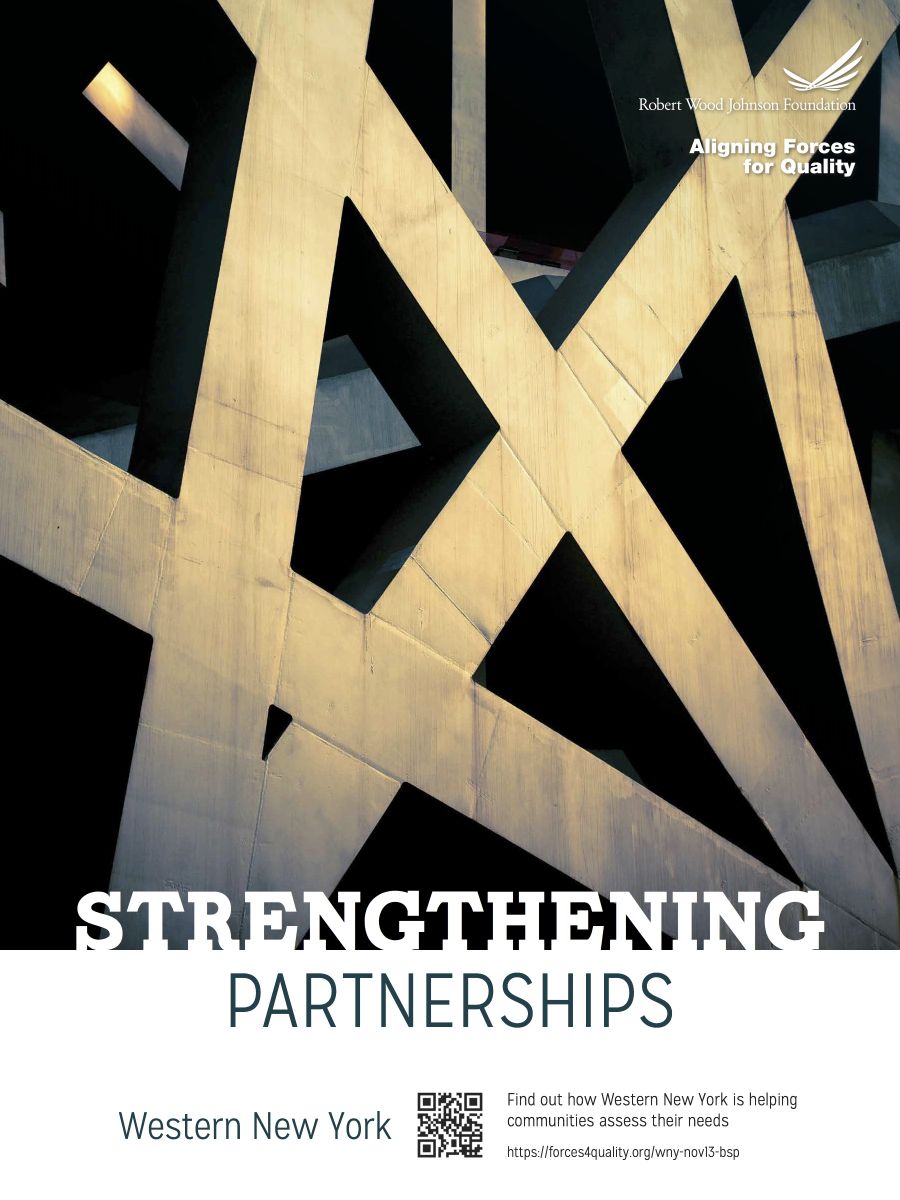Planning for Health
More than a year ago, the P² Collaborative of Western New York began a unique new working relationship with the New York State Department of Health on its agenda for public health. The state of New York requires every county to complete a community health assessment every three years to evaluate local strengths and weaknesses in public health. Based on the assessment, counties then create a community health improvement plan—this is how a county will address the problems identified during the assessment phase. Both components are essential to improving public health.
 This year, the state has been asking counties and hospitals to work together and collaborate on these plans and, for the first time, to set measurable goals. As a neutral convener, P² has been instrumental in connecting public health county officials and medical providers in seven counties in western New York. “Whenever we can strengthen the partnerships between the health departments and the hospitals, that’s extremely beneficial. And even the hospitals among themselves—oftentimes they are in competition,” said Daniel Stapleton, public health director of the Niagara County Department of Health. “If we all work together, we can have a greater, measurable impact on the health of the communities we serve.”
This year, the state has been asking counties and hospitals to work together and collaborate on these plans and, for the first time, to set measurable goals. As a neutral convener, P² has been instrumental in connecting public health county officials and medical providers in seven counties in western New York. “Whenever we can strengthen the partnerships between the health departments and the hospitals, that’s extremely beneficial. And even the hospitals among themselves—oftentimes they are in competition,” said Daniel Stapleton, public health director of the Niagara County Department of Health. “If we all work together, we can have a greater, measurable impact on the health of the communities we serve.”
This approach was brand new to many in local public health communities. “For people who’ve never done a health assessment, this can be a scary task. P² has taken the lead in organizing,” said Dennis J. McCarthy of the Upper Allegheny Health System. P² was able both to connect health leaders and help facilitate setting measurable goals for each county. P² has helped counties gather input from area residents through meetings and surveys, compile data, run focus groups, and train people to continue these types of conversations beyond the immediate task at hand.
Many local health agencies gathered interested residents to talk about health concerns and needs in a facilitated conversation known as a community conversation. Each local health agency hosting a community conversation devised a strategy to best reach area residents, with the assistance of P². Community conversations were advertised through multiple media to reach the most diverse cross-section of residents possible. Strategies ranged from low-tech—flyers at libraries and grocery stores—to outreach through email and mailing lists.
To expand the reach of community conversations, P² used a train-the-trainer model, equipping local representatives with the skills to manage open conversations about health needs. In Niagara County, the local health department and county hospitals all conducted individual focus groups to identify the health needs of their various stakeholder groups. In Genesee, Orleans, and Wyoming counties, local health department representatives conducted more than 10 rural community conversations. In Cattaraugus County, P² again trained local health department staff and other health care agency representatives to facilitate the conversations. In a unique effort in Chautauqua County, P² partnered with local hospitals to co-host a community conversation in each hospital service area. In August, P² hosted a webinar to explain further the types of support available to local health agencies.
P² worked with representatives from the local health departments to develop a survey to help the counties assess community needs. The survey was distributed via email; paper copies were available as well. The survey also was available in Spanish. All told, 6,500 western New York residents responded to a county-specific survey about their health needs. In addition, P2 crunched the data on behalf of local health departments. Said McCarthy, “Without P², it would have been much more of a struggle, and less collaborative. They have the knowledge and skills, and they pulled us all together.”
